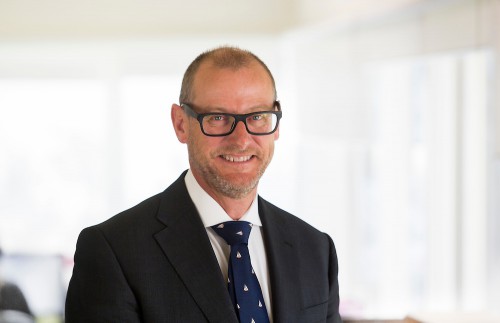Liposuction
Liposuction is a surgical procedure to remove fat accumulations from specific areas of the body. Liposuction is also called liposculpture or suction-assisted lipectomy.
Liposuction is not a way of losing weight. However, it may be an option for men and women who want to reduce bulges or fat that has resisted dieting and exercise. The intention is to decrease the bulk of fat in the area but not to remove all the fat. Through expert use of the cannula Dr. Breidahl removes and sculpts fat, taking care to minimise skin stretching and control the direction of skin shrinkage.
Reasons for Liposuction
Liposuction can improve the shape of the following areas:
- Legs – ankles, calves, knees, inner thighs and outer thighs
- Buttocks and hips
- Waist and abdomen
- Breasts, chest and back
- Overdeveloped male breasts
- Back of the upper arms
- Neck and chin
- To reduce bulk and produce a more natural skin contour at the site of previous surgery or trauma.
- To remove large fatty tumours (lipoma)
- As part of other plastic surgery procedures, such as abdominoplasty (abdominal reduction) or reduction mammaplastry (breast reduction).
Realistic expectations
Liposuction is suitable for healthy people who have realistic expectations of the outcomes of surgery. Older people with less elastic skin may not obtain the cosmetic results that can be achieved in those with younger, suppler skin.
Other plastic surgery procedures that remove excess fat and surplus skin may be more suitable for some people.
Limitations of Liposuction
Liposuction does not improve muscle tone. It is important to maintain a balanced diet and adequate exercise after liposuction. Poor candidates for liposuction include:
- Individuals who weigh more than 15 kilograms above their medically defined ideal body weight
- People who are unable to control food intake following liposuction, fat tissue at other sites in the body may increase in site, creating new unwanted bulges.
- People with large hanging folds of skin that may need to be surgically removed, for example, as in a “tummy tuck”, breast reduction, breast lift or face lift.
Surgical Methods
The three methods of liposuction include the Dry Technique, Tumescent Technique and Ultraound-assisted Lipoplasty. These are described below.
Dry Technique
Dr. Breidahl inserts the cannula through a small incision about one-half to one centimeter long. Dr. Breidahl moves the cannula backwards and forwards through the fat layer to remove the fat tissue and create a series of tunnels at different depths and in different directions. After surgery, compression of the treated areas using an elastic compression garment causes the tunnels to collapse, reducing the thickness of the fat layer and reducing swelling caused by the procedure.
Tumescent Technique
This technique involves the injection of large quantities of fluid into the fat layer. The fluid contains a salt solutions, local anaesthetic and medicines to reduce localised bleeding. However the injection of large amounts of fluid is likely to stretch the skin, hide the contours to be sculpted and adds other risks, so it is not favoured by Dr. Breidahl.
Ultrasound-assisted Lipoplasty (UAL)
This is not a preferred method as Dr. Breidahl believes the benefits are outweighed by the extra risks involved with the technique.
Recovery
If you are a day surgery patient, you may be ready to go home after a few hours. Most people report that pain, discomfort or stiffness for the first few days after surgery are minor. Paracetamol is usually sufficient to relieve pain. Gradually, pain and discomfort should fade during the first week.
Wearing a tight fitting elastic garment will reduce swelling in the treated area. This may be needed for several weeks.
Swelling and bruising are common. It may be several weeks before skin discolouration fades. It may be several months before the treated areas completely heal and acquire their final shape and contour: Dr. Breidahl recommends massage to ease swelling. It is recommended that a stable weight be maintained after surgery to achieve longer-lasting results.
Resuming normal activities
Most people can return to work anywhere between a few days and two weeks after surgery. Normal activity can usually be resumed after six weeks.
All surgery carries with it risks and complications. See here for a summary of the common risks. Risks specific to both your personal situation and the specific procedures you are seeking will be discussed in detail at your appointment with Dr Breidahl.
Team
Dr. Alan Breidahl
Dr. Alan BreidahlPlastic and Reconstructive Surgeon Dr. Alan Breidahl is one of Australia’s most respected Plastic and Reconstructive Surgeons. He is a specialist in post-traumatic and cleft lip-associated Rhinoplasty and has over 20 years clinical experience in all...
Lee Kuzma
Lee KuzmaDivision 1 Nurse and Dermal Therapist With over 20 years of nursing experience and 15 years of dermal therapy experience, including anti-wrinkle injections, dermal fillers, IPL, peels and microdermabrasion, Lee is highly skilled to bring the best out in your...
Sonia Gemin
Sonia GeminDivision 1 Post-operative Care Nurse Our always smiling and cheerful post-operative care nurse, Sonia has over 15 years’ experience in Plastic Surgery Nursing in both public and private hospitals. With a graduate certificate in Plastic Surgery and Wound...
Contact



